Mooli ki sabji is an easy, quick and special Punjabi recipe made with white radish or daikon as the star ingredient. Of course, there are so many ways a mooli sabji is made. But my recipe has minimal ingredients and is not overloaded with spices, which lets the flavors of radish shine through in the dish. This is a quick and easy radish recipe comes together in 20 minutes. Besides chopping radish and green chilies, you do not need to chop anything else. A vegan dish.
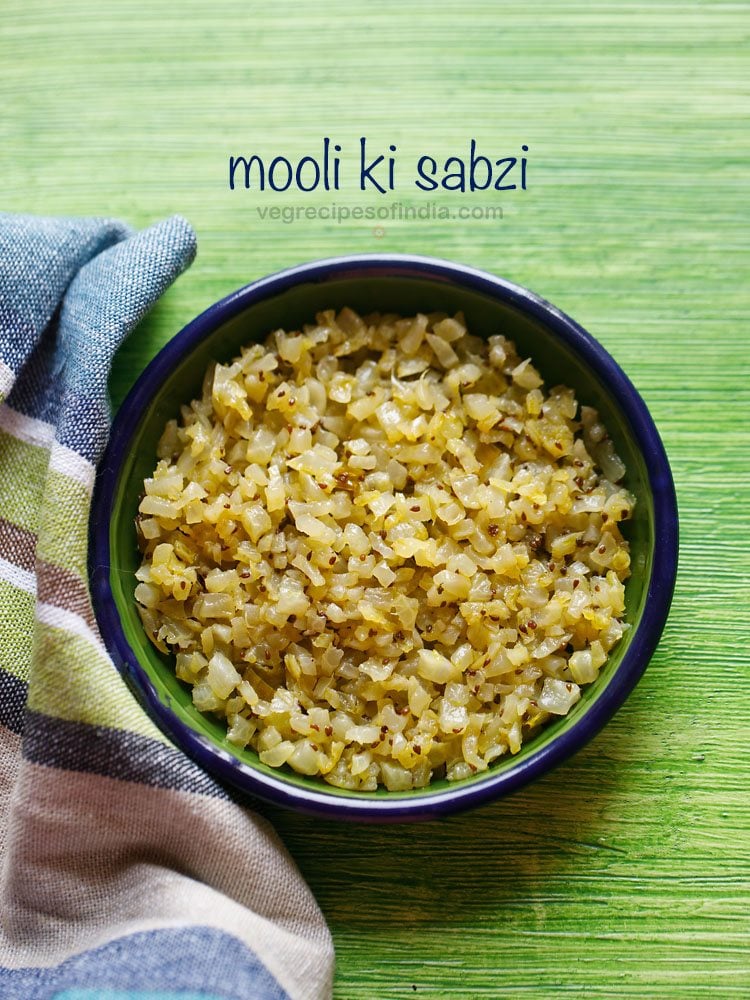
This recipe is also made without onions and garlic. We also call this sabzi as mooli bhurji. Basically this is a simple radish stir fry but called with different names – Mooli fry, Mooli stir fry, Muli sabji, radish fry etc.
We make this mooli bhurji for breakfast or lunch and serve with roti or paratha paired with a bowl of curd. A healthy and comforting breakfast. You can make the muli sabzi for dinner too.
Along with mooli sabzi, other breakfast recipes that we make from radish are Mooli ka paratha and Mooli thepla. In my home it is a standard practice to have stuffed parathas like aloo paratha, paneer paratha or aloo puri or sabzi with rotis for breakfast.
This mooli ki sabji is my mother-in-law’s recipe. When I first had this Punjabi mooli bhurji (for lunch and not breakfast), I was like wow – I have always had mooli with coconut. This was extreme to me. The pungent earthy flavor of the mooli, the hotness of the chilies, the smokiness and pungent flavor of mustard oil and ajwain (carom seeds). So many tastes and flavors together in one dish.
So if you don’t like radish, then you must try this radish fry recipe. You will forget your animosity with radish. Sometimes we also add Amritsari wadis to this dish.
You can make this mooli sabji with just the white root part or with both the root and leaves. Do remember that the white root part should be tender and the leaves also should be tender. If leaves are not tender, then just make the bhurji with the radish root. You can either chop the mooli finely or grate it.
So it is best to use young, fresh, tender and juicy radish. As they will give you the best taste and flavor. If you have fresh radish with tender leaves then do add them to the dish as they are very healthy. Rinse thoroughly the leaves in fresh water and finely chop them before including in the dish.
How to make Mooli Sabji
A) chopping mooli (radish)
1. Rinse and then peel the white radish. Either grate or chop the radish roots finely. If the radish has tender leaves, then rinse the leaves and then chop them finely too. Also chop the green chilies.
You will need 2 cups finely chopped radish or grated radish (mooli) with or without leaves.
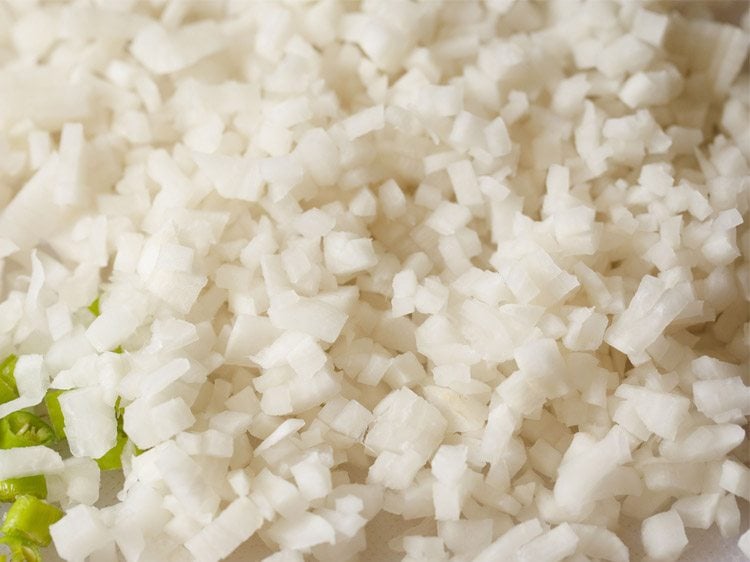
2. In a heavy pan or kadai, heat 1.5 tablespoons mustard oil till it becomes medium hot. You can heat oil on a low or medium heat.
Mustard oil gives the best taste and flavor to this dish. I highly recommend using it in this radish recipe. But if you don’t have mustard oil then use any neutral flavored oil. Though let me tell you that the flavor and taste with any other oil will be different.
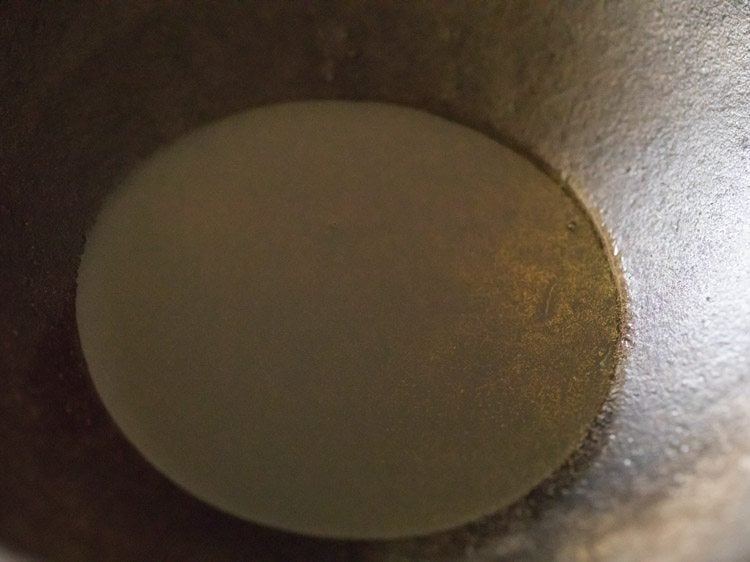
3. Then reduce the heat to a low and add ½ teaspoon carom seeds (ajwain). Let them crackle.
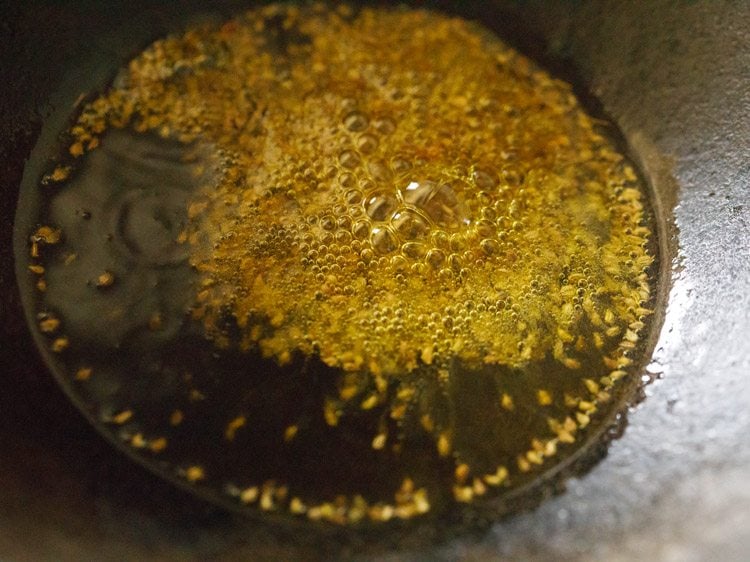
4. Now add 1 to 2 green chilies (chopped).
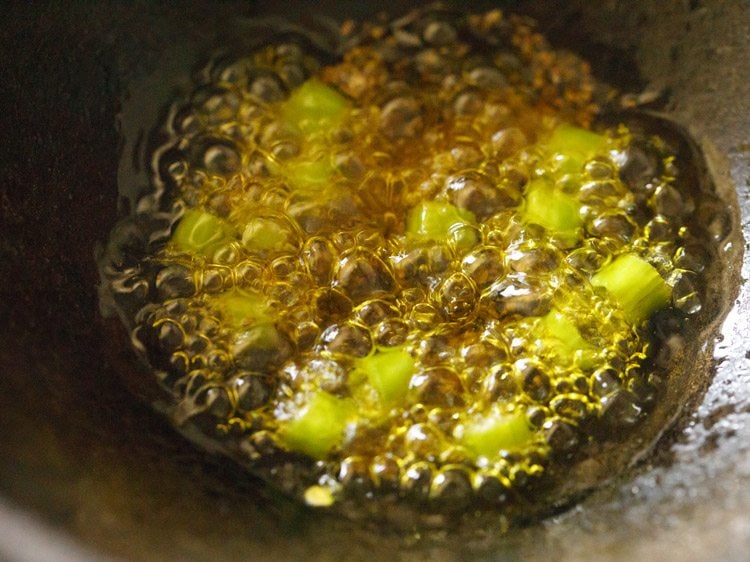
5. Immediately add 1 generous pinch asafoetida powder. Stir and fry again for 2 to 3 seconds. Fry on a low heat.
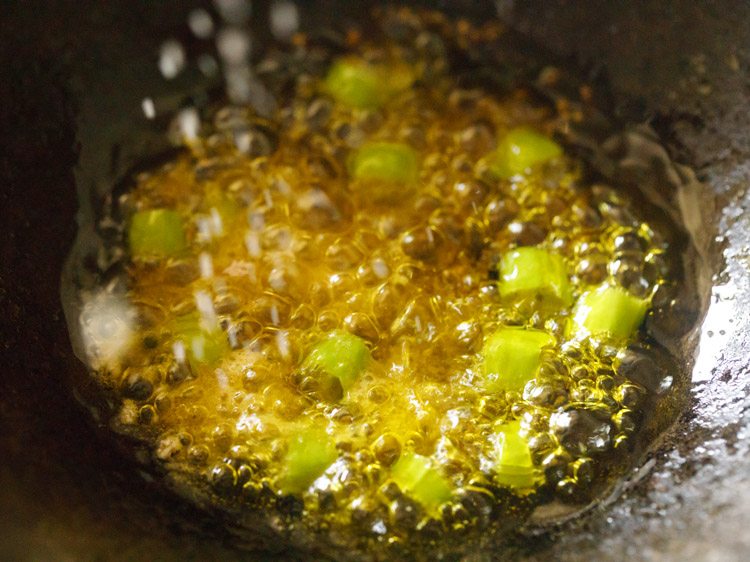
6. Then add the finely chopped radish.
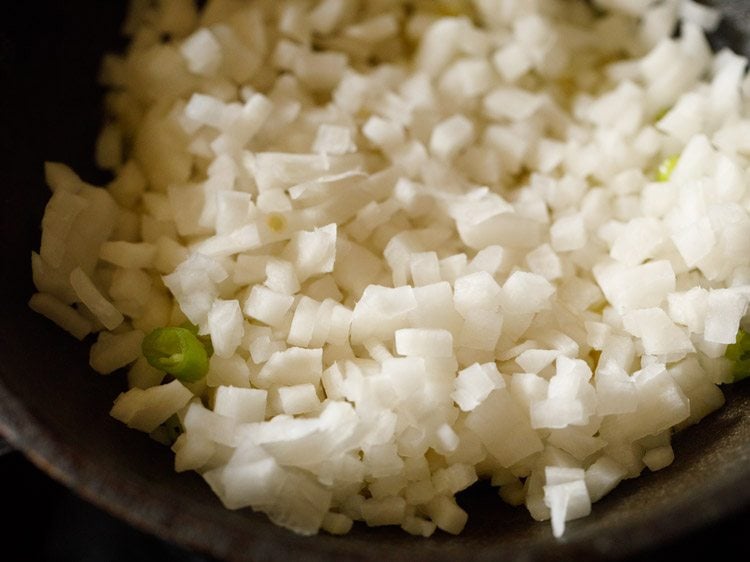
7. And salt as per taste.
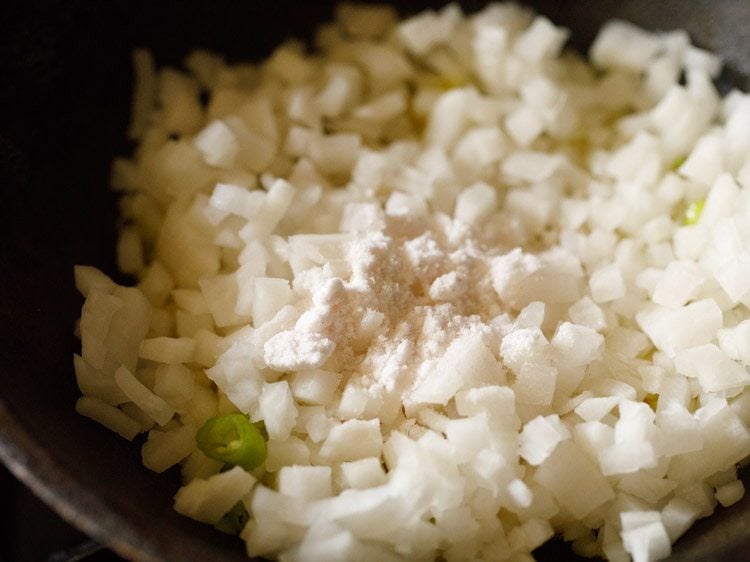
8. Stir and mix very well.
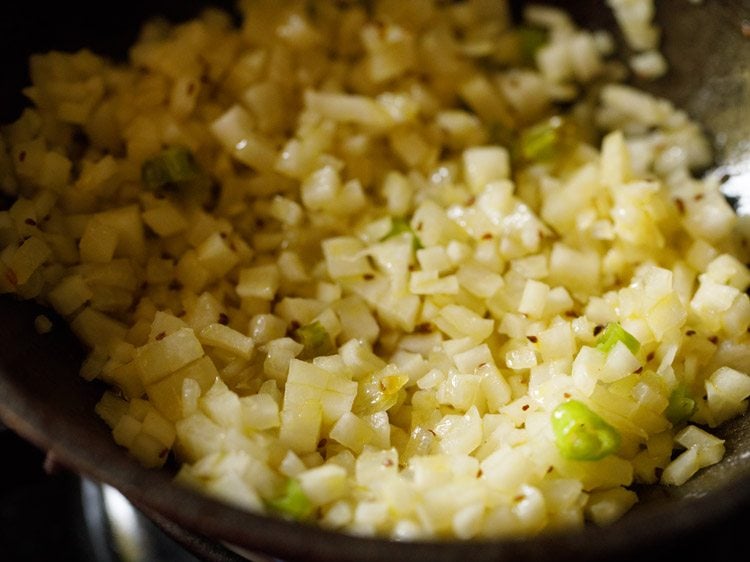
9. Let the radish cook on a low to medium-low heat. Do not cover the pan. Keep on stirring in between at intervals. The radish and the greens (if you have used them) will start to release their juices. The liquids will evaporate after some time whilst the radish is getting cooked.
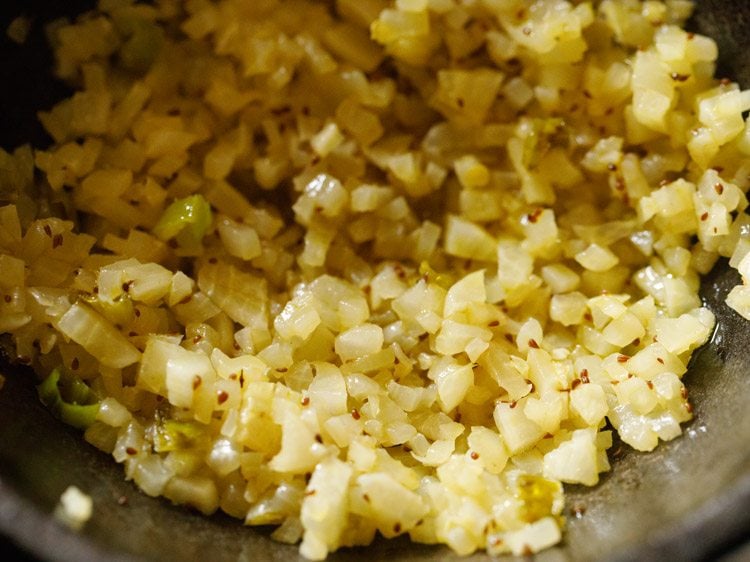
10. When the radish gets completely cooked and all the liquids have been evaporated and the whole mooli sabji looks dry, switch off the heat.
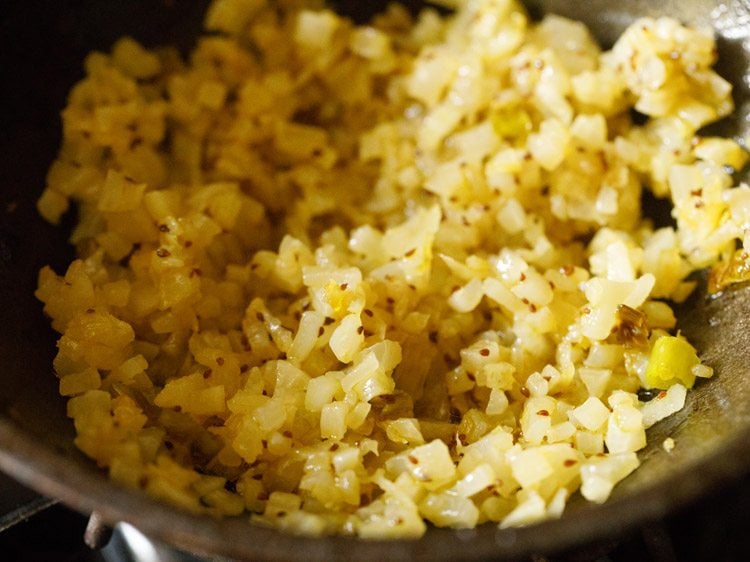
11. Serve mooli ki sabji hot or warm with soft phulka or chapati. You can also pair with a side of dal rice or with any vegetarian North Indian main course. Generally we serve this radish recipe with some roti and a side of curd or pickle.
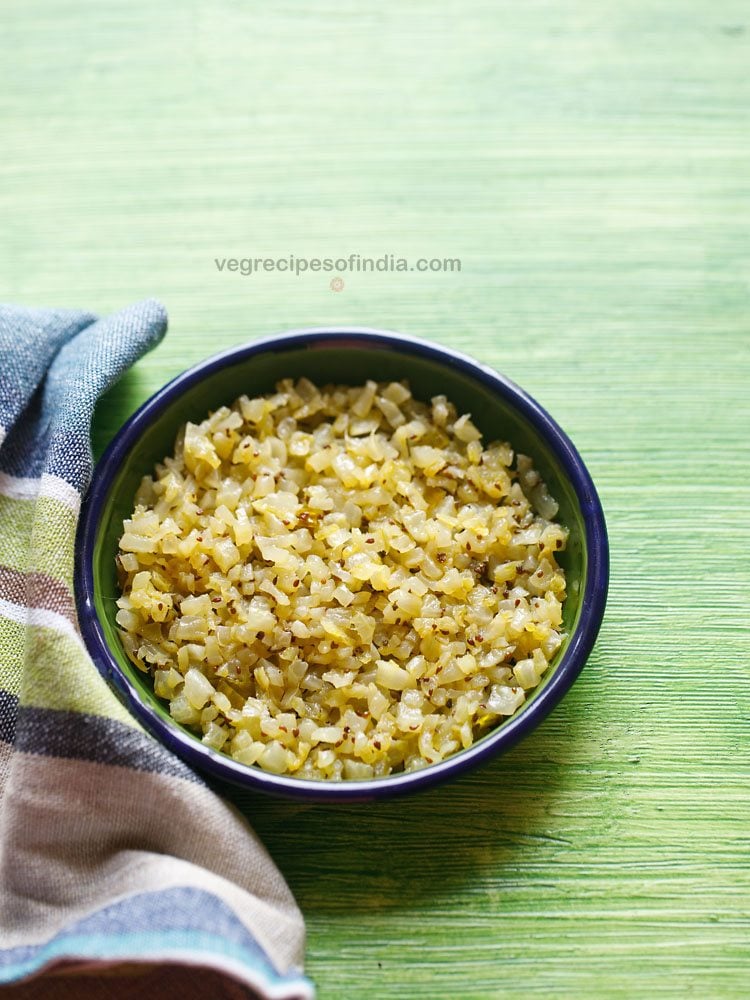
Few more sabji recipes for you!
Please be sure to rate the recipe in the recipe card or leave a comment below if you have made it. For more vegetarian inspirations, Sign Up for my emails or follow me on Instagram, Youtube, Facebook, Pinterest or Twitter.
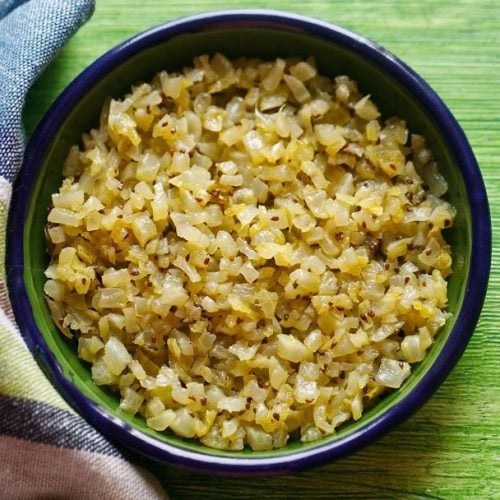
Mooli ki Sabji | Mooli Bhurji | Easy Radish Recipe
Ingredients
- 1.5 tablespoons mustard oil
- ½ teaspoon carom seeds (ajwain)
- 1 to 2 green chilies – chopped
- 1 generous pinch asafoetida powder (hing)
- 2 cups finely chopped radish or grated or chopped white radish with or without leaves (mooli or daikon)
- salt as required
Instructions
Chopping Radish
- Rinse and peel the radish. Either grate or chop the radish roots finely.
- If the radish has tender leaves, then rinse the leaves and then chop them finely too.
Making mooli sabji
- Heat the mustard oil till it becomes medium hot. Then lower the heat. Add the carom seeds and let them crackle.
- Now add the green chiles and asafoetida and fry again for some seconds.
- Add the chopped radish along with the leaves if using and salt as required. Stir and mix well.
- Do not cover the pan. Let the mooli cook on a low to medium-low heat.
- Keep on stirring in between. The radish and the greens will start to release their juices.
- Keep on stirring the radish at intervals. The liquids will evaporate whilst the radish is getting cooked.
- When the radish gets completely cooked, all the liquids are evaporated and the whole mooli sabji looks dry, then switch off the heat.
- Serve mooli ki sabji hot or warm with soft phulka or chapati. You can also pair a side vegetable salad or a bowl of curd.
Notes
- Use fresh, tender and juicy radish. Avoid using the rough and fibrous radish roots. If the leaves are tender then consider adding them to the recipe as they are very healthy.
- I highly recommend making this radish recipe with mustard oil as the flavor are awesome. But if you don’t have mustard oil then use any neutral tasting oil. Though the taste and the flavor will be different.
- Add less chilies to make the muli sabzi less hot and spicy.
- Recipe can be doubled or tripled.
Nutrition Info (Approximate Values)
This Mooli ki Sabji Recipe post is from the archives (May 2012) and has been republished and updated on 8 July 2021.
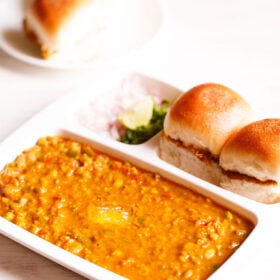

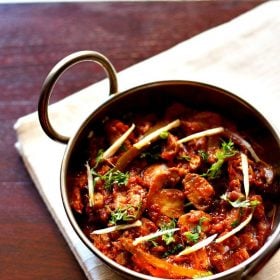
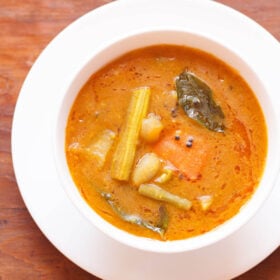








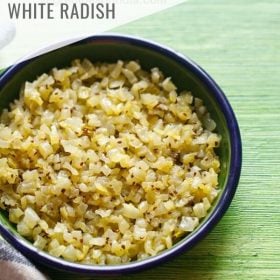
I’ve not been a big fan of mooli as I feel it has a strong unpleasant smell. But this simple recipe with a unique combination of ingredients made it so appetizing and delicious. I tried this with grated mooli that was left over after after I made mooli parathas. Both the paratha and this bhurji dish turned out so good that I have to now go and get more moolis …
thanks deepa. even i am not so fond of mooli, but this recipe, mooli paratha and mooli vadi are my favorite recipes with mooli. i only get mooli to make these three recipes on occasions ????
Hi Dasanna
I am not a great fan of radish and on top of it, you are suggesting to use Mustard oil, something which we dont use. Can i avoid the Mustard oil and replace with refined oil? i have bought Radish as its very nutritious and the only thing i know to make out of it is paranthas. this one looks nice, so want to try, but the mustard oil….Please advise.
you can use regular oil instead of mustard oil. but with mustard oil, the taste is good. sometimes i also make with sunflower oil when we do not have mustard oil. so you can skip. also preeti, avoid using refined oils. using cold pressed oils. also known as kachchi ghani oils. refined oils are bad for health. you do get kachchi ghani oils of peanut, sesame, mustard and sunflower seeds. so you can use these. trust me with these oils the food tastes much better and the health is also not affected.
Just checked again. Got it. Sorry and Thanks.
no issues ritu.
What about salt in the subji? Do we put salt?
We make this mooli subji with onions green chillies n chana daal.
thanks for sharing your variation.
Hi,
This is new..I usually make these leaves with just Greent chillies, garlic , more of garlic actually. To add a twist I sometimes add roasted groundnut powder..I will definitely try this one..thanks..
Pooja
welcome pooja. thanks for sharing your method. this recipe is how we make it at home.